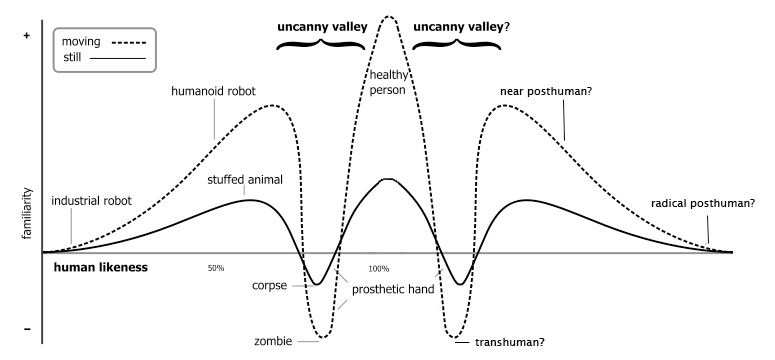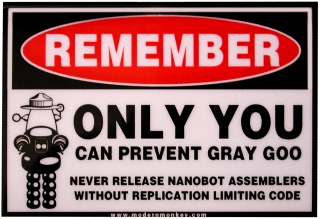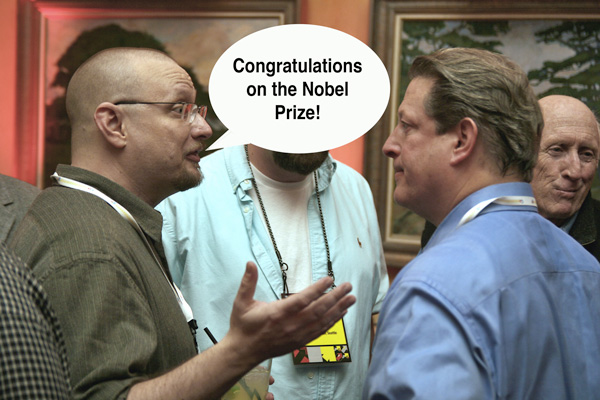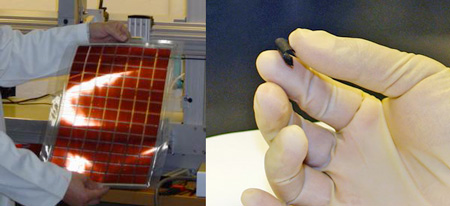 With Al Gore and the IPCC wining the Nobel Peace Prize yesterday, lots of people are talking about global warming. The remaining holdouts and dead-enders continue to bray about hoaxes and imaginary disputes, but by and large the dominant focus of conversation about climate disruption boils down to a simple question: what do we do about it?
With Al Gore and the IPCC wining the Nobel Peace Prize yesterday, lots of people are talking about global warming. The remaining holdouts and dead-enders continue to bray about hoaxes and imaginary disputes, but by and large the dominant focus of conversation about climate disruption boils down to a simple question: what do we do about it?
A simple question, but not a simple answer, in part because there are multiple possible responses, and they're not necessarily mutually-compatible. They cover three broad categories: Prevention (actions that reduce the risks of global warming or soften its eventual impact); Mitigation (actions directed at reducing the harm of global warming, and as possible reducing its sources); and Remediation (actions intended to reverse global warming and its effects). Each of these entails its own set of political, economic and environmental risks.
One of the reasons why the answers are not cut-and-dried is an aspect of global warming that, as yet, still does not receive the kind of mainstream attention it deserves: climate commitments. It turns out that, no matter what we do, we are committed to a certain amount of continued warming and climate change. Moreover, the longer we wait to start acting seriously, the more of a commitment we'll build up.
Much of this commitment comes from the physics of climate change. There is an enormous amount of lag in geophysical systems. We see that in particular in the delay between actions that increase or decrease climate forcings and the resulting climate impacts. Some of that lag comes from how long it takes for certain chemicals to cycle out of the atmosphere, some comes from how warming itself changes natural cycles, and much of it comes from the thermal inertia of the oceans -- the slow pace at which ocean temperatures change. Climate scientists generally describe this climate lag as being around 20-30 years -- so, even if we were to cut off all additional carbon emissions right this very second, we'd still see another two to three decades of warming.
That's if we're lucky. If, in that 20-30 years, the rising temperatures start triggering climate feedback effects (such as large-scale methane emissions from melting permafrost, or the reduction of the polar ice cap causing more heat to be absorbed by the dark water), problems could continue even past the 20-30 year mark. And, of course, we're not going to cut off all additional carbon emissions any time soon, so that 20-30 year countdown hasn't even started.
It should be clear at this point that the longer we wait, and the more of a climate commitment we build up, the more likely it is that we'll see feedback effects.
So with that, here are the three key solution arguments for climate disruption:

Prevention
The potential for dangerous feedback effects and other disasters forms the key driver for the
Prevention argument. Given that we simply don't yet know how damaging to our environment and our civilization these feedback effects could be, wisdom dictates that we do all we can to start eliminating the anthropogenic sources of greenhouse gases, in order to hold the committed warming to the lowest possible amount.
There are two leading versions of the Prevention argument.
The first is that, while no one single solution will solve all aspects of the global warming crisis, we have at our fingertips a sufficient variety of partial solutions that, in combination, would be able to reduce and eliminate greenhouse gas emissions in a short enough time-frame to avoid the worst of the climate disruption threats. This version is best captured in Robert Socolow's "Stabilization Wedges" model, which appeared in An Inconvenient Truth, and I covered in WorldChanging back in 2005. With the wedges approach, we could start to reduce our emissions by the 2050s -- and likely before then, realistically. This would be enough to avoid disaster, at least as long as we don't have substantial feedback effects kicking in before then.
Some of the wedges Socolow proposes are technological, but many would best be described as "behavioral" -- changes to how we move around, for example, or how we build our cities (as exemplified by the BedZED project in the UK, shown above). Although it isn't as shiny as new technology, behavioral changes can be quite powerful. Most of the behavioral changes that advocates of the Prevention strategy suggest are beneficial across multiple problems, for example. Greater emphasis on public transit reduces automobile pollution of all sorts, and helps to ameliorate the impact of peak oil; bicycling and reducing meat intake can vastly improve one's health; local diets and recycling can boost regional economies.
The primary risk of a behavioral model for avoiding climate disruption, conversely, is that, if we assume a realistic transition from current ways of life to the more sustainable versions, it will take a generation or more to make happen. Again, as long as we don't hit a dangerous tipping point in environmental systems, this relatively slow pace could still allow us to avoid global disaster -- but there's still tremendous uncertainty around the likelihood and triggers for those tipping point changes.
Another risk of the behavioral approach is the very likely countervailing pressure to avoid making changes. Whether due to cost, convenience, tradition or politics, the social and economic changes necessary to reduce greenhouse emissions will face stiff opposition. These can be overcome, but not without time and effort. And if, in fact, the necessary behavioral changes do have a short-term negative impact on global competitiveness and economic capacity, lagging adopters may have an even greater motive to avoid undertaking the necessary adjustments.
Fortunately, technology changes will help. This is the reason that I suspect that the wedge model would succeed well before 2050. The wedges Socolow proposes implicitly assume no significant breakthroughs in performance or capabilities over the next fifty year period, an assumption that's hard to justify.
It's also the crux of the second version of the Prevention argument. This version takes the idea of technological change and runs with it, arguing that making the necessary changes now would mean adopting technologies still in flux, when they're overly expensive and likely to be replaced by cheaper, better versions soon. According to this argument, even waiting ten years to start implementing big changes (to infrastructure, transportation, energy production and the like) would mean a significant reduction in overall cost and a likely improvement in how quickly improvement would result.
In a way, this is a variant of the "leapfrog" concept I've talked about frequently: countries that adopt the current versions of sustainable technology would see immediate benefits, but at a high cost and a likely lock-in of particular technologies; countries that wait would be able to adopt cheaper, better technologies down the road, and would soon overtake the earlier generation nations.
Because proponents of this version of the Prevention argument often use it to dismiss making significant behavioral changes, critics often deride it as a "techno-fix" approach. The bigger flaws, in my view, are that it adds to the overall risk by pushing the climate commitment point further out, assumes the development of radically improved technologies (very likely, but not guaranteed), and -- most importantly -- sets up a social psychology of wanting to wait for the next big thing before acting. The danger of the leapfrog model is that waiting just a bit longer can mean being able to deploy even better technologies... but by the time those roll out, even better systems would be on the near horizon, making it tempting to continue waiting (and, given the desire by economic and political incumbents to continue to accumulate power and wealth in the existing model, there would be no lack of pressure to do just that).
My view is that behavior + technology gives us the best chance of success at preventing climate disaster, and that the possibility of climate feedback makes it imperative to start making changes as quickly as possible. The likelihood of major technology improvements, however, suggests that our best strategy would be to focus our investments in systems that can be improved relatively quickly and can be replaced relatively easily. In a period of survival pressure, the best evolutionary strategy is iteration and experimentation.

Mitigation
The second response pathway is that of
Mitigation. The underlying argument is that climate disaster is already at hand, and we should be able to deal with its results, even as we try to eliminate its sources. This is an explicitly pragmatic approach, acknowledging the likelihood that climate commitments and feedback effects will make our best prevention efforts too little, too late, but recognizing that we still need to reduce the worst of the threats.
The Mitigation argument couples the need for major social, economic, political and technological changes to eliminate greenhouse gas emissions with a focus on making sure that the near-term results of climate disruption can be handled in a way that is ultimately in support of ongoing survival. Because of the split focus, this would likely mean that the Prevention-style changes would come about more slowly, thereby guaranteeing that we'll see climate impacts that we'll need to mitigate. (Of course, Mitigation proponents argue, an emphasis on Prevention doesn't guarantee that these impacts won't happen -- and then we'll have to engage in catch-up mitigation anyway.) Still, proponents of Mitigation argue that we're better off working in this way today than we are waiting until it becomes necessary.
Mitigation efforts could include recognized practices like levees and seawalls, although a smarter approach would be to rely on mangroves, marshes and wetlands as storm buffers. It would also likely include developing standards for handling environmental refugees, mechanisms for engaging in climate-disrupted farming, and aggressive deployment of urban agriculture and green roofs. Water rationing, strict limits on energy consumption, and other top-down forms of resource control could be possible elements of a Mitigation model.
In many respects, the behavioral changes required by the Mitigation strategy could be as radical as those in a Prevention approach, and in some cases possibly more so. Mitigation is not a best-case response; of all of the different responses discussed here, it's the one most likely to be thought of as a form of "green fascism," especially if the climate disruptions hit faster and harder than initially expected, requiring an equally vigorous response.
Mitigation is also a possible gateway to significant environmental manipulation. We could see focused efforts to alter the genomes of critical plants to make agriculture possible in disrupted ecosystems, or to allow more rapid consumption of CO2. It's likely that we'd see attempts to engineer microbes to consume atmospheric methane at an accelerated pace, in order to stave off some of the faster feedback effects. Such developments wouldn't be so radical as to be considered geoengineering, but could go well beyond what would be considered politically or scientifically acceptable today.
Although it shares many of the same characteristics, the Mitigation argument should not be confused with "adaptation," a buzzword that seems to be popular among the denialists who can't really deny the problem any longer. The crux of the adaptation argument seems to be "lie back and take it:" the disruptions from global warming are too far along to do anything about now, so we may as well do what we can to deal with the results. In many cases, there's an implicit "...and if you can't or can't afford to deal with the results, tough luck." The adaptation concept emphatically denies the need to make any significant behavioral or radical technological adjustments -- what we have works, and trying to impose such changes on a population under pressure just reduces our ability to adapt.
The fallacy at the heart of the adaptation concept is that climate disruption is an either/or deal: either we're in the good present climate, or we're in the bad global warming climate. Unfortunately, climate disruption is a process, not a result. Adaptation without active efforts to prevent worse results simply means having to adapt continuously to increasingly worse and worse environmental effects.
My view is that Mitigation is an increasingly likely approach as we continue to delay serious preventative strategies. If we do see the effects of climate feedback (such as methane excursions or rapid melting of Antarctic and Greenland glaciers), Mitigation strategies become almost over-determined, as -- due to climate commitment -- there would be simply no way for preventative measures to have a great enough impact swiftly enough to head off disaster.

Remediation
Riskiest of all is the
Remediation argument. Superficially a mashup of the techno-fix Prevention and the Mitigation strategies, Remediation doesn't look at ways to change greenhouse emissions or deal with direct consequences; rather, its emphasis is on changing the game entirely by altering the core geophysical processes that relate to global warming. Geoengineering (or "terraforming the Earth") is broadly synonymous with Remediation.
I've written quite a bit about geoengineering in the past, so I won't fully rehash those arguments. In short: the risks associated with geoengineering are massive, considering how poorly we understand the complexities of geophysical systems; nonetheless, if preventative and mitigation efforts fail, it is a near-certainty that someone (nation or wealthy corporation) will attempt to engage in geoengineering to head off utter disaster, allowing sufficient time for slower preventative solutions to take hold. Because of that possibility, it would be wise to study potential geoengineering strategies now, so that if the time comes, we'll be able to make smarter decisions about which ones to try and which ones to avoid.
However, it's not hard to find people who think that Remediation strategies, such as triggering algae blooms to extract large quantities of atmospheric CO2, or filling the skies with SO2 in order to block a percentage of incoming light, should be attempted now, rather than as a last-ditch response.
[The classic Futurama episode "Crimes of the Hot" includes three major league examples of Remediation: in the first, global warming is staved off by dropping a giant chunk of ice -- harvested from Halley's Comet -- into the oceans every now and then , thus solving the problem once and for all (ahem); in the second, a giant mirror is placed in orbit to block out a percentage of sunlight (failing when hit by an errant asteroid); finally, our heroes manage to solve the problem by nudging the Earth into a slightly greater orbit, reducing the solar input (and extending the year by a week).]
For some, the logic is seductive: by undertaking a grand-scale fix, we don't have to make any behavioral changes, nor would we have to direct technological efforts towards prosaic subjects like energy and efficiency. Geoengineering projects have the advantage of not requiring the cooperation of the global community; efforts to block sunlight or prompt algae blooms can be attempted even if nations like China or the United States continue to drag their feet on preventative measures.
It's worth noting at this point that, although much of the discussion about geoengineering and Remediation has occurred in the United States, the U.S. is by no means the only nation capable of carrying out such an endeavor. Because of this, any broad decision not to attempt geoengineering at this time must be accompanied by stepped up efforts to watch for independent programs.
There are two significantly problematic aspects of Remediation solutions. The first, and greatest, is that their success depends on not unleashing an unanticipated complex interaction. As an example, it's possible that triggering a large-scale algae bloom could "sterilize" a great portion of the ocean (such algae sterilization can be seen in the "dead zones" found in the Gulf of Mexico near the Mississippi, off the Pearl River in China, and at over 200 more locations around the world). More speculatively, efforts to weaken incipient hurricanes by cooling the ocean surface with deep ocean water might instead trigger more frequent (if weaker) storms. The more we come to understand geophysical systems, the more we recognize that they're precisely the kinds of complex systems in which small changes can sometimes have massive results. In short: we fiddle with them at our peril.
Over the longer haul, the second problematic aspect of Remediation solutions is that they require a great deal of effort and risk, yet are ultimately temporary. A certain amount of CO2 may be pulled from the atmosphere, or a certain degree of insolation may be blocked, but unless the existing process of increasing greenhouse emissions causing more heat to be retained is stopped, the crisis will simply return a few years or a few decades down the road. Any effective Remediation program has to be accompanied by a crash process of emissions reduction (behavioral and technological) in order to be effective over the long term.
My take on Remediation remains what it's been now for awhile: it's only valid as a last-ditch, if-we-don't-try-it-we're-dead strategy. For now, the alternatives are abundant, and the risks are far too great. That said, we need to embark on deep, ongoing study of its potential so that we can make informed, productive choices if faced with the need to try geoengineering.
So, can we solve the climate crisis? I think that the evidence is clear that we can, and that we actually have a wealth of potential strategies to do so. My preferred strategy would be a Stabilization Wedges-style approach that emphasizes rapidly-evolving and readily-replaceable technologies, along with spot efforts to mitigate the early signs of climate disaster. At the same time, more robust mitigation techniques (involving bioengineering) and programs for geoengineering should be under controlled laboratory study, so that we can deploy them if needed.
The most important element, though, is time: the longer we delay, the harder it will be to avoid the worst effects of global warming. We simply can't wait until the big problems start happening -- at that point, we'll have committed ourselves to even greater peril over the coming decades, even with a crash preventative effort. This kind of long, slow problem is outside of our common experience, but (as I've argued) is increasingly a key characteristic of the challenges we face as a civilization. We can't count on our problem-solving habits to get us out of this one; we need to learn how to integrate foresight and forethought into our policies and everyday lives.
The end result, if we're successful, may be far greater than we dare hope. Not only would we find ourselves in a world of sustainable wealth, abundance and efficiency, we'd be living in a civilization that, for the first time, had really started to think like a mature, adult society.
I'm looking forward to seeing what it's like.
 The hard-right Swiss People's Party -- the SVP -- is not known for its subtlety. I took the picture to the right, a campaign billboard for the SVP, when in Zurich last month; to be fair, while I ran across several of the billboards during my stay, this was the only one that wasn't hit with anti-racist graffiti. Nonetheless, cartoon ovine discrimination isn't the only way that this political movement gets its message out: it now uses video games.
The hard-right Swiss People's Party -- the SVP -- is not known for its subtlety. I took the picture to the right, a campaign billboard for the SVP, when in Zurich last month; to be fair, while I ran across several of the billboards during my stay, this was the only one that wasn't hit with anti-racist graffiti. Nonetheless, cartoon ovine discrimination isn't the only way that this political movement gets its message out: it now uses video games.

 Geoengineering -- or, as I sometimes call it, re-terraforming the Earth -- is back in the news, with a
Geoengineering -- or, as I sometimes call it, re-terraforming the Earth -- is back in the news, with a  Because technically it was still Monday when I started this.
Because technically it was still Monday when I started this. What does a future world of photovoltaic material look like? How do smart walls, "Watt Torrent" power-sharing networks, and electric hyperbikes sound to you? In
What does a future world of photovoltaic material look like? How do smart walls, "Watt Torrent" power-sharing networks, and electric hyperbikes sound to you? In 



 With Al Gore and the IPCC wining the Nobel Peace Prize yesterday, lots of people are talking about global warming. The remaining holdouts and dead-enders continue to bray about hoaxes and imaginary disputes, but by and large the dominant focus of conversation about climate disruption boils down to a simple question: what do we do about it?
With Al Gore and the IPCC wining the Nobel Peace Prize yesterday, lots of people are talking about global warming. The remaining holdouts and dead-enders continue to bray about hoaxes and imaginary disputes, but by and large the dominant focus of conversation about climate disruption boils down to a simple question: what do we do about it?



 I have too many windows open to pages that I really would like to post extensive commentary on if I can just get around to it.
I have too many windows open to pages that I really would like to post extensive commentary on if I can just get around to it. 
 Trying to get back into the blogging groove I found just before my Budapest trip. Here are some of the items of note I've stumbled across recently.
Trying to get back into the blogging groove I found just before my Budapest trip. Here are some of the items of note I've stumbled across recently. This is the 3-wheel car that gets over 200mpg as a plug-in hybrid, and looks like it's straight out of a 70s science fiction movie.
This is the 3-wheel car that gets over 200mpg as a plug-in hybrid, and looks like it's straight out of a 70s science fiction movie. 

 My arrival in Budapest yesterday afternoon was largely uneventful*, and today's my first full day in the city. Already, however, I can see what the primary theme of the visit will be: transition.
My arrival in Budapest yesterday afternoon was largely uneventful*, and today's my first full day in the city. Already, however, I can see what the primary theme of the visit will be: transition.
